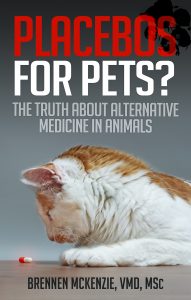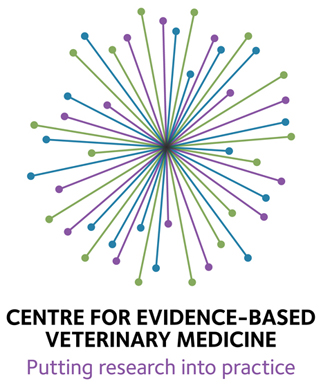Posted today on the Science-Based Medicine Blog
Testing the “Individualization” of CAM Treatments
One of the common claims of alternative medicine practitioners is that they individualize their treatment while conventional medicine treats all patients the same. This is nonsense on several levels, but it is also a common excuse for why randomized clinical trials cannot be performed, or cannot be viewed as reliable evidence, in evaluating some alternative therapies. However, some trials have been done that attempt to account for this supposed individualization of therapy, and generally they have failed to show a benefit to the supposedly individualized approach. One of those, involving Traditional Chinese Medicine (TCM) was recently discussed by Edzard Ernst, one of few, and most productive researchers in the CAM field applying an evidence-based approach.
Matthias Lechner, MD, Iva Steirer, MD, Benno Brinkhaus, MD, Yun Chen, CMD, Claudia Krist-Dungl, MS, Alexandra Koschier, MS, Martina Gantschacher, MA, Kurt Neumann, MS, and Andrea Zauner-Dungl, MD. Efficacy of Individualized Chinese Herbal Medication in Osteoarthrosis of Hip and Knee: A Double-Blind,Randomized-Controlled Clinical Study. The Journal of Alternative and Complementary Medicine. 2011;17(6): 539–547.
First, why is the notion that CAM is somehow more individualized than conventional care total nonsense? Well, to begin with, any good doctor considers the particular history, physical examination findings, diagnostic test results, known medical problems, and concurrent therapies of each patient. If individualized treatment simply means considering the unique circumstances and values of the particular patient you are treating, then all good medicine is individualized. That concept is even built into the common definitions of evidence-based medicine:
Evidence based medicine is the conscientious, explicit, and judicious use of current best evidence in making decisions about the care of individual patients. The practice of evidence based medicine means integrating individual clinical expertise with the best available external clinical evidence from systematic research. (Sackett)
[EBM is] the integration of the best research evidence with our clinical expertise and our patient’s unique values and circumstances.(Strauss)
However, when CAM practitioners claim that formal scientific research and science-based medicine ignore individual variation, they are usually referring to the practice of studying groups of patients under controlled conditions and then applying lessons learned from those studies to the care of individuals. They claim that since we are all snowflakes, utterly unique, what is learned from groups cannot tell us anything useful about individuals.
This argument fails most dramatically on the simple evidence of the tremendous effectiveness of science-based medicine. Tens of thousands of years of looking at patients one by one and trying to figure out based on those experiences what to do for the next patient failed to control or eliminate any common diseases or meaningfully improve the length and quality of human life and health. A couple of centuries of gradually relying on formal scientific research instead of such haphazard individual experiences has wiped out or dramatically reduced many common and deadly diseases, nearly doubled average life expectancy (at least for those who can afford to use science-based medicine), and in many other ways unequivocally improved our health. It requires deep self-delusion to deny that science works better than prescientific, unstructured ways of figuring out how to preserve and restore health.
On a more theoretical level, however, consider this. Statistics can indicate the probability of winning or losing a game of chance very precisely, on the group level. As an individual, of course, you can’t know with certainty whether you will win or lose if you go to Las Vegas and play these games because these statistics only describe what happens over the course of many trials, that is what will happen on average when large numbers of people play. They don’t predict for you, as a unique individual, what your results at blackjack or roulette will be. This is very much like the situation in science, where controlled studies look at outcomes on the level of the group but can’t precisely predict the results of a therapy in an individual patient.
And yet, casinos make enormous sums of money by playing the odds and expecting that most people will lose. This is a successful strategy for them. And many people lose, some with disastrous personal consequences, by imagining that they are exempt from the statistical rules that apply to groups and that some special individual factor will allow them to beat the odds. Choosing to believe that general statistical principles don’t apply to them because they are special and unique ruins people’s lives in Vegas, and in medicine. Choosing to play with or against the odds, as defined by formal research, is no guarantee, but it is much more likely to lead to a good outcome than imagining the odds don’t matter because each of us is unique.
Finally, when a CAM practitioner claims they treat every individual patient based on that patient’s unique characteristics and that science-based medicine treats all patients as if they were the same because it bases treatment guidelines on research done on groups, they are simply mistaken. If a series of controlled studies indicates that Treatment X is better than Treatment Y for a certain diseases, and if I use this to support giving patients with that disease Treatment X most of the time, then yes I am applying information gained from population research to individuals. I am playing the odds.
However, if a CAM practitioner looks at a patient and evaluates their particular characteristics and then decides on a specific treatment, where do they come up with the connection between the patient’s characteristics and the treatment? They use their personal experience, gained from seeing what happens with prior patients, or they use rules laid down by other practitioners based of their own experiences, or they rely on general rules based on the theoretical ideas behind the style of therapy they use. In other words, they extrapolate from observations made on other patients to the individual they are currently treating.
This is exactly the same as what a science-based practitioner does with one important difference: the generalizations that scientific medicine applies to individual patients come from formal, controlled research designed to compensate for the unreliability of individual observations and judgments, whereas the generalizations used by CAM come from informal, unstructured observations with no control for bias or the many common errors that mislead us when we study disease. CAM practitioners are using generalizations based on the study of groups to decide how to treat each new case, they are just relying on poorer quality group evidence.
Ok, so how does this apply to the clinical study that looked at supposedly individualized TCM herbal therapy for arthritis of the knee? Well, the study started by randomly assigning patients to either receive individualized herbal treatment based on the judgment of experienced practitioners in each case, or a standard herbal mixture believed, again based on past experience with groups of patients, not to have any benefits for arthritis. The experimental formula consisted of a number of herbs selected in advanced based on TCM theory which the investigators expected might be useful for the kind of disease they were studying. However, individual patients received particular combinations of these ingredients based on the judgment or practitioners at the time they were evaluated.
The control treatment (not really a placebo since it contained chemicals which might or might not have real physiological effects, since none have been thoroughly evaluated in scientific studies) was a collection of herbs not believed to have benefit for arthritis based on prior experience and TCM theory It was made to taste similar to the herbs pre-selected for the experimental treatment to help make it harder for patients to know which they were receiving. I can already hear the complaints of some herbalists that this makes it an inappropriate control since taste is one of the guiding principles for the use of herbs in some approaches to herbal medicine. I’ll leave that pseudoscientific objection aside for now since it’s not directly relevant to the point here.
Baseline characteristics were similar between the two groups of patients, and randomization and blinding appeared to be properly conducted. Overall the study was well-done methodologically, with a formal accounting of patients lost to follow-up and a reasonable effort to use standard and predefined outcome measures.
So what were the results? Well, as is usual in a study looking at a subjective measure like pain, all patients improved. There was, however, no difference between those who received individualized treatment and a random herbal concoction not expected to have any effect on arthritis. This most likely indicates nothing happening here other than nonspecific effects associated with participating in a trial, including placebo, regression to the mean, the Hawthorne effect, and all the usual suspects that fool us in clinical trials, and in real life.
This study nicely illustrates several of the issues associated with supposed individualization of CAM treatment. First, it shows that such treatment is not, in any meaningful sense, any more individualized than good quality science-based medical treatment. Choosing a selection of herbs based on previous experience, historical use, tradition, and the unscientific theories of Traditional Chinese Medicine, and then selecting which of these herbs to give each patient based on the same prior experience and unscientific theory, is still applying generalizations based on groups to individuals. It simply uses generalizations based on unreliable sources of data.
The study also illustrates that individualizing therapy in this way doesn’t add any efficacy to the treatment. Not surprisingly, the study showed, as the others mentioned early have as well, that tailoring treatment to individuals based on generalizations derived from biased and unreliable sources of information leads to a therapy no more effective than randomly picking herbs out of a hat.
The difference between effective science-based medicine and ineffective medicine of any kind, conventional or alternative, is that the general principles used to guide therapy are derived from formal, controlled research that compensates for the weaknesses in our individual, informal, and unstructured judgment. If individualized medicine is just a code for using informal group observations instead of structured scientific ones to guide therapy, than it is not surprising that it doesn’t work any better than just making up a treatment haphazardly with no guiding principles at all.









